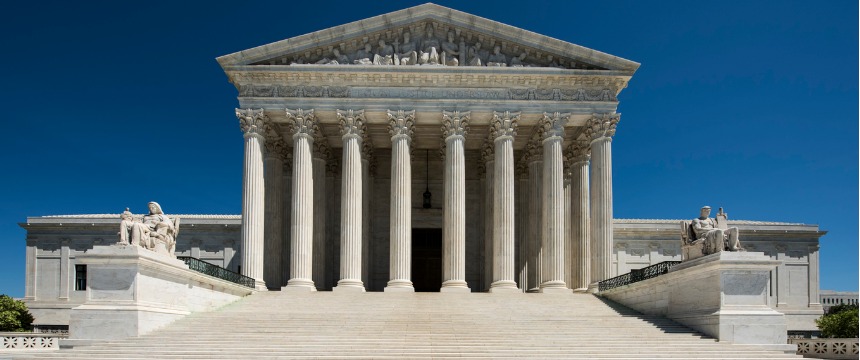Wetlands No More? U.S. Supreme Court Limits Federal Regulation of Wetlands in Sackett v. EPA Decision

Special thanks to Madeline Barone, a summer associate in Foley’s Chicago office, for her contributions to this article.
On May 25, 2023, the Supreme Court issued a decision in Sackett v. EPA, effectively narrowing the scope of federally protected wetlands to which the Clean Water Act (CWA) applies. The CWA provides the U.S. Army Corp of Engineers (USACE) and the EPA with regulatory and permitting authority over “waters of the United States” (WOTUS). Although there is a long case-law history related to the definition of WOTUS, this decision is the first time the Supreme Court has addressed the issue since its 2006 decision in Rapanos v. United States. In the plurality decision in Rapanos Justice Kennedy’s concurring opinion introduced the “significant nexus” test which was later adopted by the USACE and EPA for determining whether a wetland may be federally regulated. Kennedy’s “significant nexus” test defined a federally protected wetland as a body of water that significantly affects the integrity of navigable waters. In practice, the significant nexus test was considerably broader than Justice Scalia’s “relatively permanent” test, also introduced in Rapanos, which would have limited federal jurisdiction over wetlands to those with a continuous surface connection to navigable waters. The “significant nexus” test has been favored by the EPA and USACE and was largely adopted by the Biden Administration in the 2023 Revised Definition of ‘Waters of the United States’ rule. In the Sackett decision, the Court rejected the “significant nexus” test and instead adopted a narrower definition of WOTUS that requires connectivity of wetlands to surface waters.
The current case centered on efforts by landowners Michael and Chantell Sackett who attempted to backfill wetlands on their property. The EPA notified the Sacketts that their backfilling without a permit violated the CWA, as the wetlands had a “significant nexus” to a nearby unnamed tributary and significantly affected the ecology of nearby Priest Lake. The Sacketts sued, challenging the EPA’s determination that the wetlands in question were subject to federal jurisdiction.
In its 2021 decision, the Ninth Circuit applied Kennedy’s “significant nexus” test and found that the Sacketts’ wetlands had a significant nexus to the nearby WOTUS. In the Supreme Court’s review of this decision, Justice Alito, writing for the 5-4 majority, rejected the “significant nexus” test as not having a basis in the CWA and adopted Scalia’s “relatively permanent” test previously proposed in Scalia’s opinion in Rapanos. The majority in Sackett recognized that wetlands adjacent to traditionally navigable water are covered by the CWA, but concluded that to be considered “adjacent” to navigable water, the wetland must be “adjoining” the navigable waters, that is, it must have a “continuous surface connection with that water, making it difficult to determine where the ‘water’ ends and the ‘wetland’ begins.” The Court found that wetlands that are separate from traditional navigable waters cannot be considered part of those waters, even if they are located nearby. Justice Kavanuagh in his concurring judgment criticized the majority for rewriting “adjacent” to mean “adjoining,” arguing it was inconsistent with Congress’s separate use of both terms in different sections of the CWA. Justice Kavanaugh argued that this will lead to damaging real world results, providing the example of how under the majority’s new “continuous surface connection” test, wetlands which form part of flood-control projects along the Mississippi River will no longer receive federal protection where they are separated from the river by levees. Justice Kavanaugh concluded that “the Court’s new test will leave some long-regulated adjacent wetlands no longer covered by the Clean Water Act, with significant repercussions for water quality and flood control throughout the United States.”
Impact
The decision in Sackett effectively nullifies the EPA’s 2023 WOTUS rule, which had codified the EPA’s adoption of the “significant nexus” test established in Rapanos. The change in definition of WOTUS to one which emphasizes surface connectivity for wetlands will remove huge tracts of wetlands from federal regulatory jurisdiction. Many land developments impacting wetlands may no longer require federal permits, and if they do, the permitting may occur more quickly as the process becomes more streamlined with fewer wetlands arguably covered by the CWA. Critics and environmental groups note that these changes may lead to a loss of ecosystem services previously provided to navigable waters and downstream communities, including loss of protection from flooding and erosion and impacting water quality. That said, in the absence of federal regulatory oversight, many—but certainly not all – states are expected to step in to regulate wetlands that had previously been thought of as subject to federal jurisdiction; some states may in fact seek to expand protection of state wetlands in response to the Sackett decision. For example, shortly after the Sackett decision, California Attorney General Rob Bonta stated that California “will continue to do all we can to protect our waterways,” including using “every tool available to us under the law to protect our precious waterways and the people and ecosystems that depend on them.”
The decision in this latest chapter in the decades-long debate over the definition of WOTUS is certainly expected to significantly affect development in the near term. Whether this definition “sticks” is, however, less certain, as EPA is likely to initiate new rulemaking to address this ruling and further legal challenges are anticipated. In the meantime, the scope of the CWA jurisdiction is narrower than under recent interpretations, including both Kennedy’s test in Rapanos and the EPA’s 2023 definition. Accordingly, property owners with wetlands previously determined to be WOTUS may want to evaluate whether to have their properties reassessed in light of the Sackett decision. Members of Foley’s environmental practice group are able to help you evaluate what options might be advantageous to consider at this time.


